Most people who use them wish they could stop, nobody needs them, and nonetheless smokers will purchase their cigarettes with a loyalty and regularity that most other brands could only dream of cultivating in their customer base.
According to the CDC, smoking causes an estimated 443,000 premature deaths and costs the United States nearly $200 billion dollars (divided roughly evenly between lost labor costs and health care expenditures) per year; another 8.6 million live with a serious illness caused by smoking. Put differently, one of five Americans per year die completely preventable deaths, 49,000 of which result from secondhand smoke exposure. Such statistics by far exceed what one might consider to be an acceptable level of risk for a completely optional and expendable activity.
Smoking is therefore not merely a cross to bear for the 46.6 million Americans who smoke; it is a national problem that affects everyone at multiple levels, from the minor tedium of secondhand smoke inhalation at restaurants and bars, to the financial burden of increased healthcare costs that we all must shoulder, to the pain and suffering that comes with losing loved ones to tobacco-related death and disease. Indeed, since the first Surgeon General’s report on tobacco in 1964, smoking has no longer been thought of as an issue of consumer choice; it has become a matter of epidemiology and public health.
While the public has grown more aware of the dangers of smoking over the years and some progress has been made in lowering the number of smokers nationwide, smoking remains a major public health issue in the United States that often seems intractable.
Everybody is affected by smoking, we all know smokers who have struggled with quitting, and most everyone would agree that smoking is a problem. So why is it still a problem, and what can be done about it?
When we talk about smoking, we are dealing with an issue that is extremely difficult to grasp in a logical, objective manner. Smoking involves addiction, an industry that spends an enormous amount of money on lobbying and advertising, and it questions the limitations of individual choice: how are we to reconcile an individual’s right to choose to smoke when the nation as a whole pays the consequences?
Root cause analysis is a powerful tool that can simplify and clarify even issues as multifarious as the problem of smoking in the United States. What follows is a demonstration of how the methodology employed by root cause analysis can break any issue into its constituent elements, represent cause and effect in a clear, visual way, and thus identify several solutions at several points in that cause/effect chain to reduce levels of risk.
Root Cause Analysis Example
Here, a proactive Cause Map allows us to determine some of the causes of smoking and speculate as to what can be done about it in an objective, rational manner.
When conducting root cause analysis of any incident, be they single occurrences or, as in this case, ongoing issues, we follow three steps:
- Define the problem
- Conduct the analysis
- Identify the best solutions
Each step will be discussed below in relation to smoking.
Root Cause Analysis Step 1: Define the Problem
The first step of the root cause analysis approach is to define the problem by asking four key questions:
What is the problem?
With regard to smoking, if you ask five people on the street to define the problem, you will get as many answers. For some, the bottom line is the death rate: smoking kills, period. Another might cite disease as the overriding problem, while others take issue with the inflated medical costs related to smoking. The more politically minded might mention the tobacco lobbies, or perhaps advertising geared towards the young to hook in new smokers. Those who know the difficulties involved in quitting firsthand might suggest the strength of nicotine addiction: even if one wants very badly to stop, the addiction often proves overpowering.
Root cause analysis must first distinguish between the problems caused by smoking and those that lead to smoking. These are two separate (albeit, related) issues that each need to be considered individually in order to come to productive solutions. Thus, focusing first exclusively on the problems caused by smoking, we can note the three “problems”–death, disease, and medical costs–on the first line.
When conducting root cause analysis of any such issue, the facilitator anticipates that the group may disagree about the problems and writes down all three responses without judging or evaluating any of them. Identifying potential problems is they key–there is no need to spend time debating them.
The magnitude of this incident is defined by the impact to the goals. In other words, “In what way has the issue prevented us from achieving our ideal state as an organization?”
When did it happen?
While we can specify a time at which many specific incidents occur, in the case of smoking, the problem is ongoing. We also capture differences here – in this case, smoking is the single most preventable cause of death.
Where did it happen?
Several pieces of information may need to be captured when specifying a location in any root cause analysis, but at minimum the geographic location and the process occurring must be specified in order to keep the parameters of the investigation well defined. Here, we limit our analysis to cigarette smoking in the United States.
How did it impact the goals?
Finally, root cause analysis asks how the issue in question impacts the organization’s goals. For the purposes of this particular root cause analysis in which smoking is the issue, we take the organization to be the United States. and What national goals are affected by smoking? Safety, the environment, productivity, and financial health/solvency are important to any country; in this section, we see how they are affected by smoking.
A country’s safety goal includes having a healthy population. Smoking causes 440,000 premature deaths per year, and 8.6 million people currently suffer from smoking-related illnesses. Additionally, more than 900 infant deaths result from smoking during pregnancy per year. All such consequences of smoking impact the United Sates’ safety goal.
Smoking also results in the release of over 250 toxic chemicals (not to mention the tendency to leave cigarette butts on the ground); this effects the environmental goal.
Annual productivity losses due to smoking are estimated to be at $97.6 billion (billion!). This interferes with the production goal.
Finally, the health care costs of smoking, which amount to $96.7 billion caused directly by smoking and $4.98 billion caused by secondhand smoke exposure annually, are clearly high enough to be considered a significant burden on the nation’s financial goal.
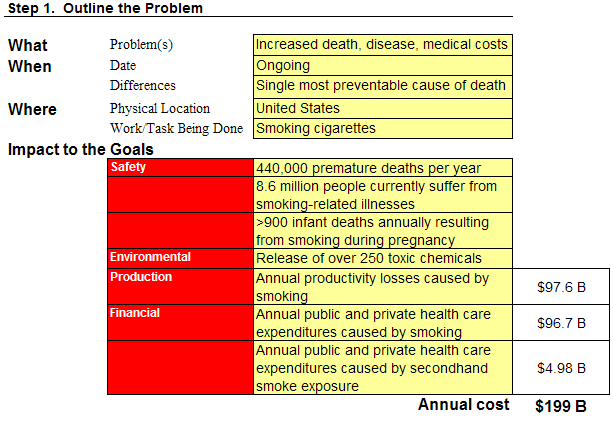
Root Cause Analysis Step 2: Identify the Causes (The Analysis)
Once the problem has been defined and broken down into its constituent elements, we move into the analysis phase of root cause analysis. Here, the incident is broken down into causes, which are then captured on the Cause Map.
First, we write down the goals that were affected, as defined in the problem outline. These are the first cause-effect relationships we track in our Cause Map (our own tool for root cause analysis).
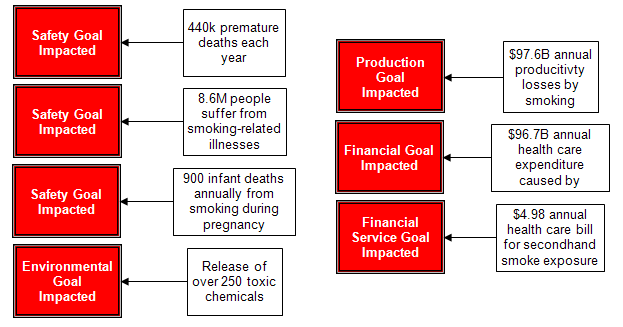
The analysis continues by asking, “Why?” and moves to the right of the cause-effect relationship in question. Here, we begin with health care bills and productivity losses, caused by premature deaths and smoking-related illnesses.
These premature deaths and illnesses are caused by an increased risk of death and disease associated with smoking.
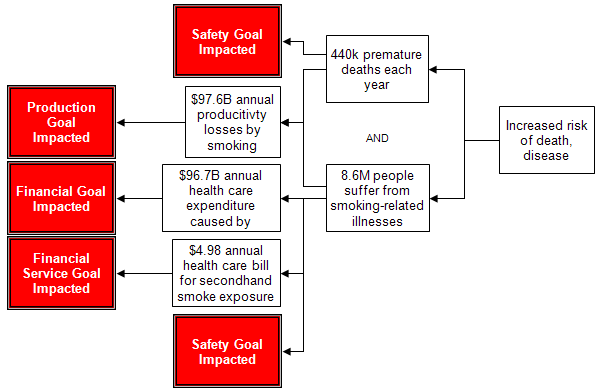
The next logical question is, “What causes the increased risk of death and disease?”
Or, in other words… why?
The increased risk of death and disease is caused by an increased risk of cancer, cardiovascular disease, and respiratory disease. We will look at each of these in turn.
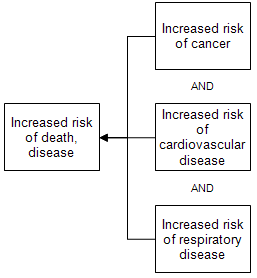
Genetic changes (or mutations) in cells increase the risk of cancer. These mutations are caused by increased host susceptibility (due to genetic factors) and by carcinogens that bind to DNA. Why do carcinogens bind to the DNA? Because of exposure to carcinogens, which arises from regular exposure to tobacco smoke.
Though it may seem self-evident that one must be exposed to carcinogens in order for them to bind to the DNA, the guiding principle of root cause analysis is to build a Cause Map with sufficient detail to formulate useful and workable solutions to reduce risk to an acceptable level. This will be discussed in more detail shortly, but it is important to note that a Cause Map is intended to visually depict a chain of events, and would thus be incomplete or unworkable without a link in the chain. In order to ensure the clarity necessary for thorough root cause analysis, each cause and effect relationship must be captured if it can lead to a useful solution.

Continuing with the process, we note that an increased risk of cardiovascular disease results from a reduced supply of oxygen through the body. This occurs for two reasons, which will be discussed in more detail: oxygen supply reduction is due to reduced levels of oxygen in the blood, and also due to reduced circulation.
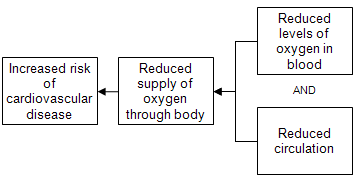
Why are oxygen levels in the blood reduced? Because the ability to carry oxygen is diminished as carbon monoxide displaces oxygen in the blood. This occurs from exposure to carbon monoxide, which is found in – you guessed it – tobacco smoke.

Reduced oxygen supply is also caused by reduced circulation from artherosclerosis, a hardening of the arteries caused by endothelial dysfunction. This occurs when oxygen molecules mutate DNA, a process known as oxidative stress. Oxidative stress, in turn, is caused by increased exposure to oxidations and by a decreased antioxidant capacity, both due to inhalation of cigarette smoke.
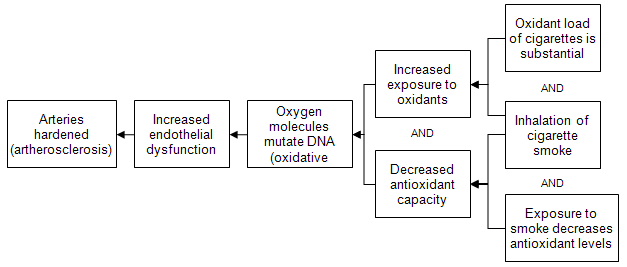
An increased risk of respiratory disease results from chronic obstructive pulmonary disease (COPD), and from increased respiratory infections. What causes the COPD? Chronic lung injury and increased scarring of the airways. What causes the chronic injury? An increased inflammation response due to oxidative stress, and increased host susceptibility (both of which are discussed above).
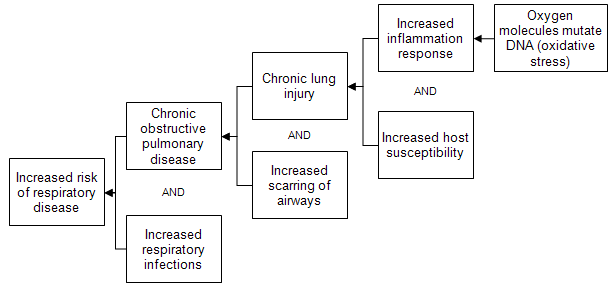
The scarring is caused by an increased inflammatory response, which, along with a decreased protective response, causes the respiratory infections. Why? Because of a suppression of the immune response due to exposure to nicotine, which occurs from inhalation of cigarette smoke.
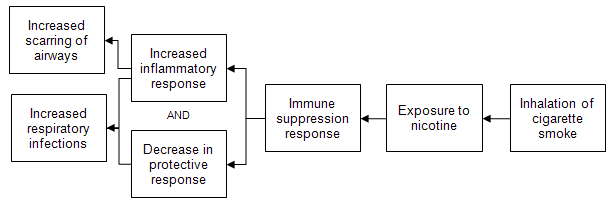
Before we move on to discuss why people smoke, let’s look at a facet of the safety goal that we have not yet covered: infant deaths. Annually, smoking causes 900 infant deaths by decreasing birth weight (the key predictor of infant mortality) and increasing the risk of stillborn birth. Both of these conditions result from an increased risk of premature birth.
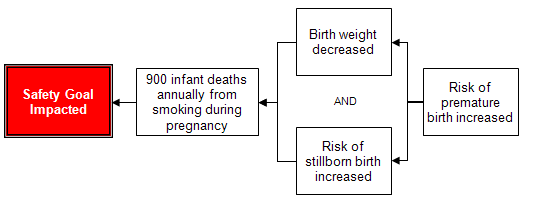
Why does the risk of premature birth increase? Because pregnancy complications increase due to constricted blood vessels in the uterus and umbilical cord caused by smoking while pregnant.

Another factor in decreased birth weight is fetal growth restriction, which occurs because nicotine constricts uterine blood vessels, thus reducing the amount of blood flow to the fetus, and also adds the oxygen blocker carbon monoxide to the blood flow, which decreases the amount of oxygen available to the baby.
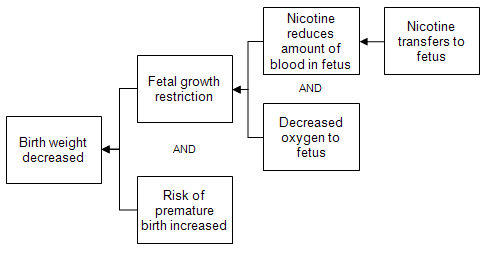
Obviously, regular exposure to tobacco smoke can be caused by actually smoking a cigarette (more on this to follow). It can also be caused, however, by being exposed to secondhand smoke. This can happen at home if a family member smokes in the house or car, or at work if there is no smoke-free policy in place or enforced. Such policies are not in place in some locations because of concerns that bans would decrease business, and because of successful lobbying to Congressand by donations to candidates, political parties, and action groups.
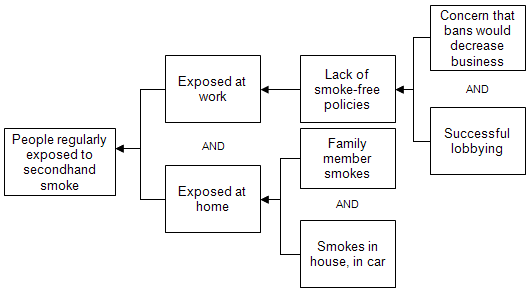
Given the severity of the risks and consequences involved in smoking, we arrive at the central question: why on earth do people smoke cigarettes? People smoke because at some point they started, and quitting is extremely difficult. Obviously, this has been the subject of much discussion.
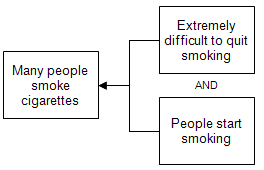
Research about why people start smoking abounds. Although different studies place a different emphasis on which of the reasons that people begin smoking is most to blame, most agree on four main causes: a lack of increase in the cost of cigarettes, the positive imagery associated with smoking, beginning smoking as a child, and the belief that benefits outweigh the risks. We will go into more detail about each.
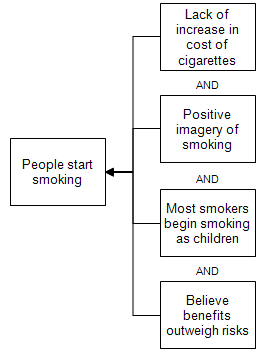
One of the reasons people start smoking is that the cost of cigarettes has not significantly increased. Or, conversely, fewer people would start smoking if cigarettes were more expensive. Cigarette prices have not increased because they are not tethered to their true cost. The cost of cigarettes (national average of $4.26 a pack) does not reflect the true cost of smoking them (estimated at $10.28 a pack for health costs and productivity losses). If cigarettes did reflect their true cost, the price of cigarettes would have gone up.
Cigarettes also remain inexpensive because the small increases in taxes on cigarettes over the years have been offset by promotions and coupons by the cigarette companies. The tax increases have not increased proportionally with price. This is because the federal excise tax is not keeping up with inflation (thanks to successful lobbying by the tobacco companies), and because of worries that increasing taxes will increase the black market and interstate smuggling, as taxes vary by state (and tend to be lower in tobacco producing states, again due to lobbying). if the taxes had risen proportionally with the price, then the promotions would not have offset the costs; since they have not, the promotions have offset the price increases.
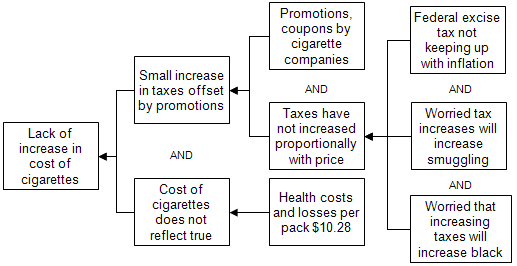
The positive imagery associated with smoking is a product of heavy cigarette advertising and promotion, including promotional items. This is particularly powerful because children are more susceptible to advertising than adults are, and most smokers begin as children. Counter-advertising to combat this is lacking because of a lack of funding: the guaranteed federal funds provided from the cigarette company settlement ran out in 2003, and state budget shortfalls have decreased state funding. Compounding the issue, smoking is rife in popular culture, and has been glamorized (intentionally or not) by celebrities and role models for decades. Cigarette companies sponsor sports teams and athletes, and smoking in films, dating back to the birth of movies themselves, has had a dramatic effect on the American psyche. Smoking in movies has in fact increased, particularly in those with a PG-13 ratings–precisely the films, in other words, that are marketed to adolescents. Think about which characters tend to smoke–the rebels, the heroes, the femmes fatales. These are the “cool” characters that children tend to want to emulate, and who smoke at a higher rate than the general population.
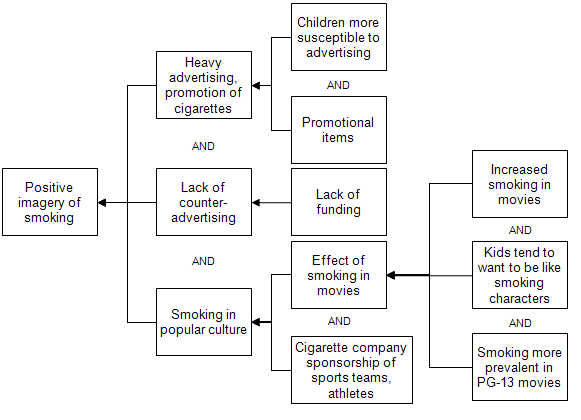
As we have mentioned before, most smokers start smoking as kids. A whopping 90% of smokers began before the age of 18, despite the fact that purchasing cigarettes before 18 is illegal. This is because children are more susceptible to addiction than adults, ¬[and addictions formed during the very period in which children construct and solidify their identities are by necessity stronger than those formed in adulthood, with shallower psychological roots]. Most smokers begin smoking as minors also because between the heavy advertising, promotion, use of cartoon mascots, designs, and flavors (including candy-flavored cigarettes that appeal particularly to children), minors simply find cigarettes enticing.
Moreover, children are prone to experimentation and rebellion, and most children don’t get counseling from physicians or parents against using cigarettes, in some cases because the parents themselves smoke. Finally, children are particularly susceptible to peer pressure, and find it difficult not to take part when others, including parents and peers, are smoking around them.
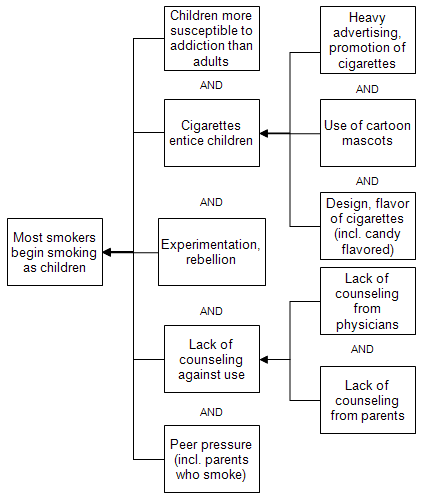
The fourth and final commonly agreed upon reason that people start smoking is that some people believe the benefits outweigh the risks. Cigarettes can relieve stress and help people concentrate because they induce an improved, calmer mood. They may also help people lose weight, both because nicotine is an appetite suppressant and because smoking is a distraction from eating. People may think of these short-term benefits to outweigh the risks, and may in fact not fully realize the risks they are taking. The risks involved in smoking were not widely known before the 1960s; now, the risks involved in smoking might be inaccurately understood because of a lack of information from physicians, and also because children tend to underestimate personal risk in general and believe they will be able to stop smoking easily. The younger the smoker, the less likely it is that he or she has known people who have struggled with addiction, and may overestimate their capacity to battle a powerful physical and psychological dependency. Moreover, the risks and consequences seem to be too far off in the future to be of concern.
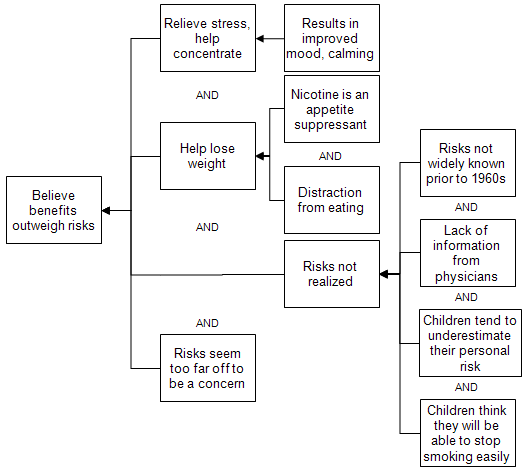
Now that we have pieced apart the reasons that people start smoking, we can look at why it is so hard for them to quit. Research has shown that people have trouble quitting for many reasons: people switch to modified brands instead, cigarettes are extremely addictive (this is hard to overstate), former smokers relapse, they lack assistance in quitting, they are afraid of weight gain, and the lack of increase in the cost of cigarettes removes a financial motivation to quit (since more expensive cigarettes would encourage or oblige some smokers to quit).
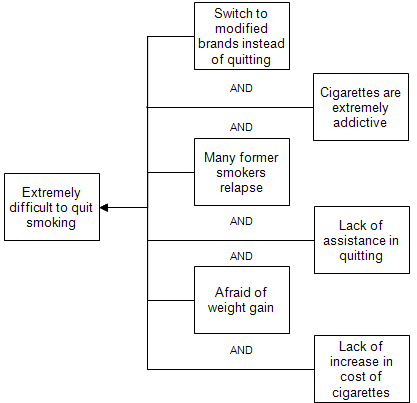
People switch to modified brands (such as light or low-tar cigarettes) because they believe that such cigarettes carry a lower risk, a belief that stems from health claims made by cigarette manufacturers. Manufacturers can make such claims because of a lack of regulation by the FDA. This is due to successful lobbying, concern that FDA regulation would be taken as approval, a lack of FDA funding, and a 2000 Supreme Court ruling holding that the FDA lacks jurisdiction over tobacco.
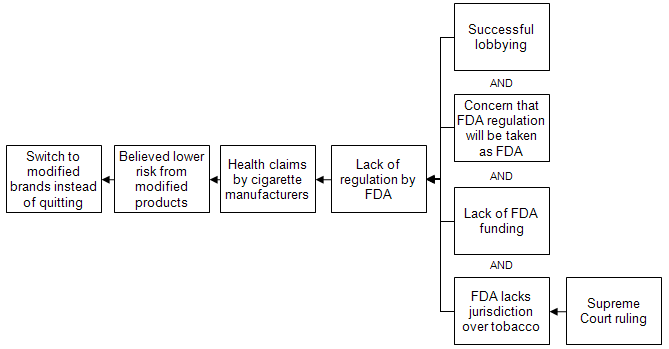
Cigarettes are extremely addictive because they contain nicotine, which is extremely addictive. Nicotine is addictive because physically and mentally, users become used to it very rapidly; once hooked, they need it to feel normal. It results in an improved, calmer mood, because it triggers the release of dopamine in the brain, which gives users feelings of pleasure or satisfaction. Moreover, it delivers a high dose very quickly, and addiction occurs extremely quickly; research hasn’t shown exactly why yet.
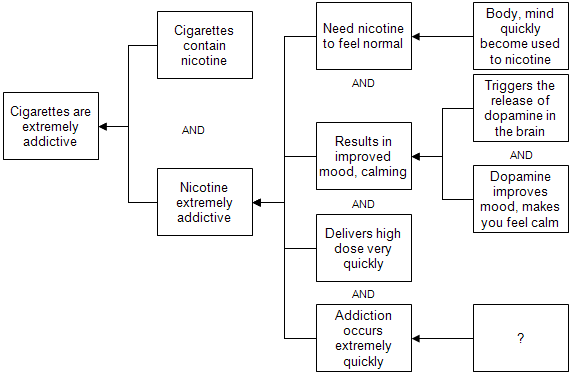
Many former smokers relapse because habits are difficult to break, and because severe withdrawal symptoms and stress can cause relapses. This is because smoking is associated with a pleasant experience, whereas withdrawal is a very unpleasant one that is experienced both physically and emotionally. Withdrawal symptoms include anxiety, depression, drowsiness or insomnia, trouble concentrating, headaches, and weight gain; when the solution to all of these problems looks as simple and available as a cigarette, it is easy to cave in.
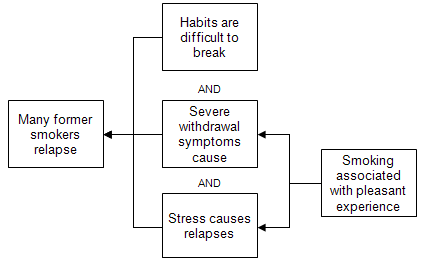
Finally, people have trouble quitting smoking because of a lack of assistance, both in terms of insufficient assistance from physicians and a lack of use of smoking cessation aids.
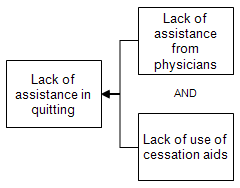
A dearth of assistance from physicians results from the fact that physicians tend not to follow through with patients, and may lack practical advice and strategy to give to their patients. Additionally, many times physicians are unaware that their patients smoke: doctors don’t bring up the subject because they are uncomfortable or don’t know how to, and smokers do not ask for assistance because they believe they can quit on their own.
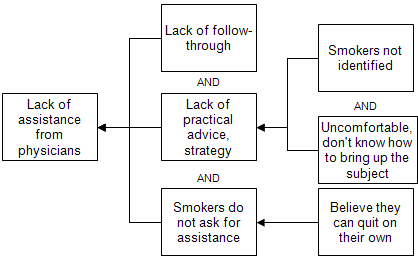
Another reason smokers find it so difficult to quit is a refusal to use smoking cessation aids. Some people are afraid to use nicotine-replacement aids because they (wrongly) believe nicotine itself is a cause of cancer. Some don’t use aids because they are expensive, and may not be covered by insurance or because they believe aids are not necessary, either because they are not helpful or because they believe they can quit on their own. Others try aids, but find them to be uncomfortable, inconvenient, or inadequate replacements for cigarettes, and thus refuse the help.
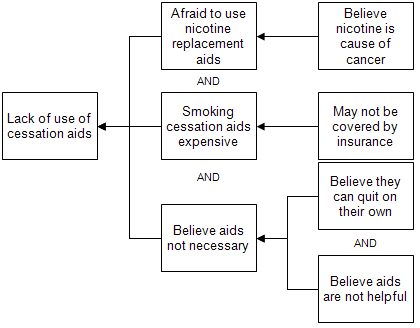
As you’ve watched the Cause Map grow, you have probably identified some solutions to the smoking epidemic facing our nation. Some of them are for the government to implement, some for doctors, some for smokers, some for parents. You have probably also formed a clearer idea of the sheer complexity of the smoking epidemic. This Cause Map is a compendium of the research on smoking, both in terms of its effects and of its causes. As more research is conducted, more detail can be added, and our root cause analysis of smoking in the United States can be made even deeper, pointing to even more potential solutions.
Already, based on what has been captured at this stage of the root cause analysis, each and every one of us can identify and implement an action that can help mitigate the smoking epidemic. It could be as simple as talking to your kids about smoking (or not smoking in front of them), or as complex as trying to quit smoking yourself.
Root Cause Analysis Step 3: Select the Best Solutions (Reduce the Risk)
Once the Cause Map is built to a sufficient level of detail with supporting evidence the solutions step can be started. The Cause Map is used to identify all the possible solutions for given issue so that the best solutions can be selected. It is easier to identify many possible solutions from the detailed Cause Map than the oversimplified high level analysis of “don’t smoke.” Because if it were that easy, it wouldn’t be the problem it is today.
In root cause analysis, solutions can be documented directly on the Cause Map, and are typically placed in a green box directly above the cause that the solution controls. At this stage, all solutions are considered and documented on the Cause Map. After the analysis is complete, the best solutions are selected based on their impact on the organization’s goals. Shown below is a solution added to a cause from the Cause Map.
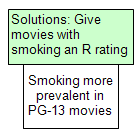
Every issue has its causes. The smoking epidemic viewed superficially has only one cause. At a more detailed level it has 8 causes, 27 causes and more than 160 causes. All of the levels of the Cause Map are accurate – some simply have more detail that others.
Root Cause Analysis Improves Problem Solving Skills
The Cause Mapping method focuses on the basics of the cause-effect principle so that it can be applied consistently to day-to-day issues as well as catastrophic, high risk issues. The steps of root cause analysis are the same, but the level of detail will vary depending on the specific incident or issue under consideration. Focusing on the basics of the cause-effect principle make the Cause Mapping approach to root cause analysis a simple and effective method for investigating safety, environmental, compliance, customer, production, equipment or service issues.
Click on “Download PDF” above to download a PDF showing the Root Cause Analysis Investigation.
Resources
The information used to make this Cause Map was obtained from:
- Nemours Foundation
- Medline (A Service of the National Library of Medicine and the National Institutes of Health
- American Cancer Society
- Centers for Disease Control and Prevention
- National Toxicology Program
- Department of Health and Human Services
- Society of Actuaries
- National Public Radio
- Smoke-Free Movies (UCSF)
- National Institute on Drug Abuse
- Biomed Central
- World Bank
Bring Cause Mapping® Root Cause Analysis training to your site
Schedule a workshop at your location to train your team on how to lead, facilitate, and participate in a root cause analysis investigation.
